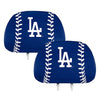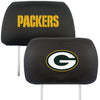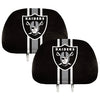History of the NFL
The Beginnings of American Football
The birth date of football in the United States is generally regarded by football historians as November 6, 1869, when teams from Rutgers and
The game of football has a history of constant rule changes. Rule changes have been implemented to bolster the excitement of the game of football and to increase the game's safety.
In 1873, representatives from
Walter Camp, the coach at Yale and a dissenter from the IFA over his desire for an eleven man team, helped begin the final step in the evolution from rugby-style play to the modern game of American football. The IFA’s rules committee, led by Camp, soon cut the number of players from fifteen to eleven, and also instituted the size of the playing field, at one hundred ten yards. In 1882 Camp also introduced the system of downs. After first allowing three attempts to advance the ball five yards, in 1906 the distance was changed to ten yards. The fourth down was added in 1912.
Within a decade, concern over the increasing brutality of the game led to its ban by some colleges. Nearly 180 players had suffered serious injuries, and eighteen deaths had been reported from the brutal mass plays that had become common practice. So in 1905, President Theodore Roosevelt called upon Harvard,
At a meeting between the schools, reform was agreed upon, and at a second meeting, attended by more than sixty other schools, the group appointed a seven member Rules Committee and set up what would later become known as the National Collegiate Athletic Association, or the NCAA.
From this committee came the legalization of the forward pass, which resulted in a redesign of the ball and a more open style of play on the field. The rough mass plays, which once caused so many serious injuries, were prohibited by the committee. Also prohibited was the locking of arms by teammates in an effort to clear the way for their ball carriers. The length of the game was shortened, from seventy to sixty minutes, and the neutral zone, which separates the teams by the length of the ball before each play begins, was also established.
Important Chronological changes in the evolution of the game:
1869
Rutgers and
1876
At the Massasoit convention, the first rules for American football were written. Walter Camp, who would become known as the father of American football, first became involved with the game.
1892
In an era in which football was a major attraction of local athletic clubs, an intense competition between two Pittsburgh-area clubs, the Allegheny Athletic Association (AAA) and the Pittsburgh Athletic Club (PAC), led to the making of the first professional football player. Former Yale All-America guard William (Pudge) Heffelfinger was paid $500 by the AAA to play in a game against the PAC, becoming the first person to be paid to play football, November 12. The AAA won the game 4-0 when Heffelfinger picked up a PAC fumble and ran 35 yards for a touchdown.
1893
The Pittsburgh Athletic Club signed one of its players, probably halfback Grant Dibert, to the first known pro football contract, which covered all of the PAC's games for the year.
1895
John Brallier became the first football player to openly turn pro, accepting $10 and expenses to play for the Latrobe YMCA against the Jeannette Athletic Club.
1896
The Allegheny Athletic Association team fielded the first completely professional team for its abbreviated two-game season.
1897
The Latrobe Athletic Association football team went entirely professional, becoming the first team to play a full season with only professionals.
1898
A touchdown was changed from four points to five.
1899
Chris O'Brien formed a neighborhood team, which played under the name the Morgan Athletic Club, on the south side of
1900
William C. Temple took over the team payments for the Duquesne Country and Athletic Club, becoming the first known individual club owner.
1902
Baseball's Philadelphia Athletics, managed by Connie Mack, and the Philadelphia Phillies formed professional football teams, joining the Pittsburgh Stars in the first attempt at a pro football league, named the National Football League. The Athletics won the first night football game ever played, 39-0 over Kanaweola AC at
1903
The Franklin (
1904
A field goal was changed from five points to four.
1905
The Canton AC, later to become known as the Bulldogs, became a professional team.
1906
The forward pass was legalized. The first authenticated pass completion in a pro game came on October 27, when George (Peggy) Parratt of Massillon threw a completion to Dan (Bullet) Riley in a victory over a combined Benwood-Moundsville team. Arch-rivals
1909
A field goal dropped from four points to three.
The development of professional American Football
The first professional league was not established until 1910. Between 1910 and 1912, the administration of professional leagues was disorganized to say the least. Players had little incentive to remain loyal to a single team, and often acted as 'freelance' athletes, selling their services to a team temporarily before moving quickly to another club.
By 1920, it was decided that it would be in the best interests of the sport to develop a body that would oversee a major football league and bring some organization to the game. It was with this intention that delegates from major teams came together at Ralph Hay’s Hupmobile Dealership in Canton, Ohio, to discuss the future of the sport. They formed the American Professional Football Association, renamed the National Football League (NFL) by 1922. The representatives drafted a constitution and made a number of important decisions, including a motion that would reduce the constant movement of players and encourage team loyalty. Jim Thorpe, who had found fame as an athlete and as a football and baseball player, was the first person to be elected President of the new organization.
The NFL flourished in the remainder of the 20th Century, and American Football became increasingly popular, even stepping outside of the shadow of baseball in the years following World War II. This massive increase in popularity owed a lot to technological developments, most notably in 1939, when the game between the Brooklyn Dodgers and the Philadelphia Eagles made history as the first to be broadcast on television. Indeed, although over six hundred NFL players had fought for their country and twenty-one had been killed, the sport recovered quickly from the disruption imposed by the War, and an increasing number of Americans began to enjoy games, as more families began to purchase television sets.
In 1946 the All-American Football Conference began play. Their team locations had a wider span of the Country than the NFL. Their owners had deeper pockets as well. The Cleveland Browns dominated this League winning all 4 Championships. Like challengers before and after, this League couldn’t outlast the NFL. In 1950 they merged with the NFL with only the Cleveland Browns,
However, in 1959, the sport faced one of its greatest challenges yet. Frustrated by the NFL, Lamar Hunt resolved to create a serious rival to the NFL; the American Football League. The 1960s were dominated by squabbles between the rival leagues over players and television rights. The AFL even took their grievances into the court room, claiming that the NFL were unfairly dominating television coverage and players. The court eventually ruled in favor of the NFL, but it was becoming increasingly clear to players, coaches and fans that something would have to be done to curb the belligerence that was beginning to pervade the sport.
In 1966, senior figures from both leagues agreed that the AFL and NFL should merge in time for the beginning of the 1970 season, thus eliminating arguments about players, sponsorship and air time. Since 1970, therefore, one major football league, still known as the NFL, has existed in the
The NFL has expanded to 32 teams and are currently divided as the AFC North, AFC South, AFC East, AFC West and the NFC North, NFC South, NFC East and NFC West.
Information is gathered from http://www.pigskinacademy.com



















